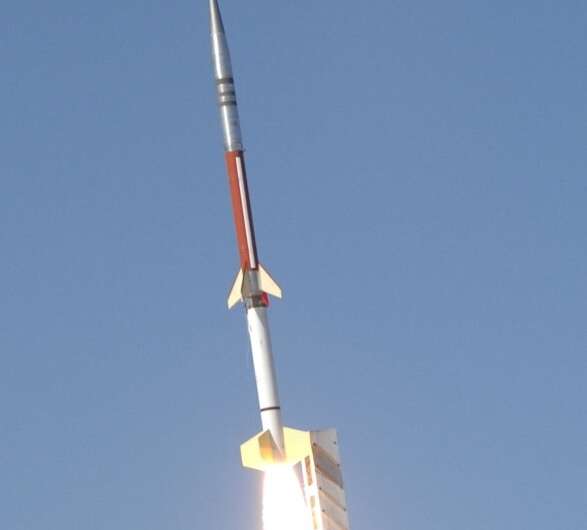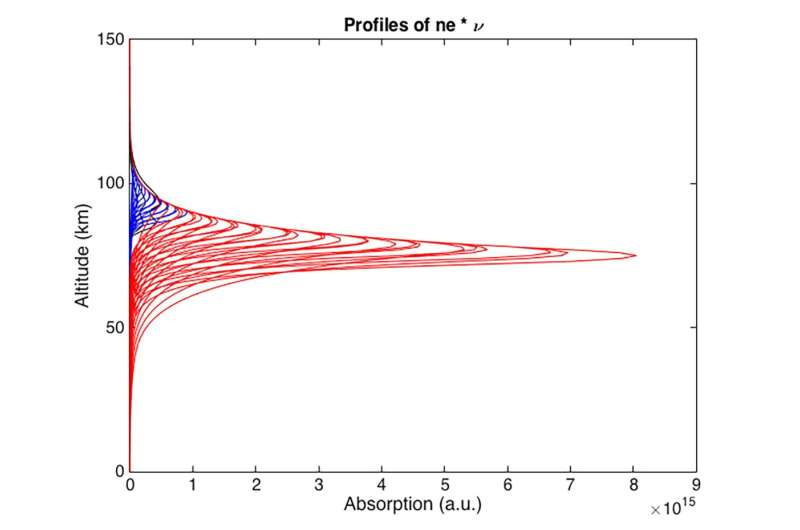NASA rocket mission studying escaping radio waves

A NASA rocket mission, launching May 26, 2021, will study radio waves that escape through the Earth's ionosphere impacting the environment surrounding GPS and geosynchronous satellites, such as those for weather monitoring and communications.
Launching from NASA's Wallops Flight Facility, a Terrier-Improved Malemute suborbital sounding rocket will carry the Vlf trans-Ionospheric Propagation Experiment Rocket, or VIPER. The mission is scheduled for 9:15 p.m., Wednesday, May 26. The launch window is 9:15 p.m. to midnight EDT and the backup days are May 27-28. The launch may be visible in the mid-Atlantic region.
VIPER is studying very low frequency radio, or VLF, waves that are produced by both natural (e.g. lightning) and artificial means. During the day these waves are trapped or absorbed by the Earth's ionosphere. At night, however, some of the waves escape through the ionosphere and accelerate electrons in the Van Allen Radiation Belt.
"At night, the lower layers of the ionosphere are much less dense, and more of the VLF can leak through, propagate along the Earth's magnetic field lines, and end up interacting with the high-energy electrons trapped in the Van Allen Radiation Belts," said Dr. John Bonnell, the project's principal investigator from the University of California, Berkeley.
"Those belts of intense energetic electron fluxes cover a range of distances from the Earth, from as close as 14,300 miles altitude (~4.4 Earth radii) out to 23,500 miles altitude (~7 Earth radii). GPS satellites orbit at around 4.4 Earth radii, and geosynchronous satellites at about 6.6 Earth radii. So, satellites in those orbits are often engulfed by the Van Allen Radiation Belts and have to tolerate the effects those energetic particles have on electronics and materials," said Bonnell.
In addition to the in-situ measurements made by VIPER as it flies through the area of interest, the mission also will employ numerous ground-based systems, including those in Maine, North Carolina, Georgia, Colorado and Virginia.
By making accurate measurements of the VLF electromagnetic fields and the properties of the ionosphere below, at, and above the absorption and reflection layers in the ionosphere, VIPER provides a novel data set for comparison with existing numerical models of the fields and the ionosphere, as well as observations made in the past of the escaping VLF radiation at higher altitudes and on the ground.

"It was surprising to find that while lots of ground-based and orbital observations of the VLF absorption/reflections/transmission had been made, there's not been any measurements right in the region where all the action happens. While we have good models of what to expect in such regions, actual measurements are key to pin down the details of those models, as well as to develop the instruments required to explore more challenging regions," said Bonnell.
The two-stage Terrier-Improved Malemute rocket will carry the VIPER payload to an altitude of about 94 miles before descending and landing in the Atlantic Ocean. The payload will not be recovered.
Provided by NASA




















